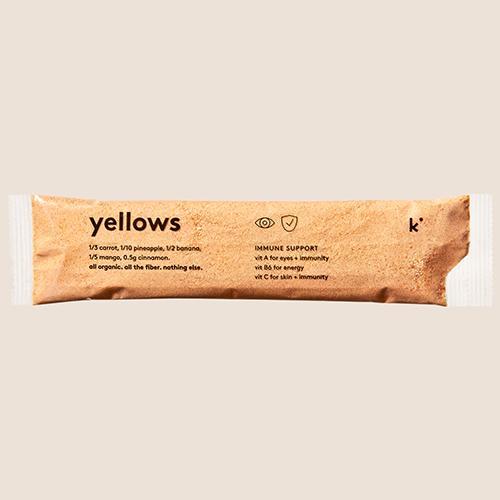Ending the dieting cycle
For many people, “eating healthier” feels like shorthand for “restrictive dieting.” But that couldn’t be further from the reality. Let us walk you through some of our favorite tricks for improving your relationship with food without guilt, fear, or restriction.
Let’s start off by defining a term that we use quite a bit: fad diets. What are they? Do they ever work? What distinguishes a “fad diet” from a more holistic attempt to eat in a more nourishing way?
Not all fad diets will possess all of the following qualities, but all fad diets will be marked by one or two of them, at minimum:
A guarantee of near-immediate results
Extreme claims from quick fixes
Restrictive of certain foods or food groups
No expectation of physical activity
When being marketed a diet, be mindful of these qualities. There are valid, medical reasons some individuals might need to cut out certain foods or food groups entirely. But by and large, folks who commit themselves to diets like these, that often lack scientific evidence, will find that they’re:
Nutritionally inadequate in one way or another
In practice, exemplified by rapid weight loss followed by rapid weight regain
Not sustainable in the long term
The fad diet trap
As we all know, there are plenty of reasons these fad diets are so appealing. And that’s largely because so much of what we hear about food is based off of fad diet messaging – they’re just that pervasive culturally!
Concepts like eating less than what our bodies need, ignoring hunger cues and cravings, limiting certain food groups, using exercise solely to burn off food, and totally eliminating sugar all originate from fad diet messaging. Ultimately, none of these behaviors are sustainable and can actually lead to a worsened lifelong relationship with food.
Food is meant to be enjoyed and bring happiness to our life! Restrictive dieting may contribute to feelings of guilt or shame, which can even lead to intense cravings of certain foods, and even feelings of being out of control around them. Over-restricting foods and nutrients can also cause damage to your metabolism, reproductive system, and cardiovascular system, and can lead to weight cycling. 95% of dieters regain lost weight, leading back to restrictive dieting and setting them on a never-ending cycle of restriction and frustration.
So what actually works?
Then how can we improve our health through nutrition if we aren’t dieting?
Here’s what we propose:
Learn how to listen to your body’s internal cues
Nourish your body with nutritious foods that satisfy you
Incorporate all the foods you love
Find movement you enjoy
Set non-scale-based goals to achieve
Easier said than done, right? Don’t worry – we’ve got your back. Here are just a few strategies to help you.
Understanding fullness and building routine
While we aren’t big on numbers or tracking, the hunger scale is a great tool to help build trust in yourself and understand your body’s needs.
Check in with your hunger/fullness before, during, and after a meal. If you find it helpful, keep note of your levels – you can even track them in a journal. If you don’t feel hunger throughout the day, this practice, along with regular eating can help re-establish hunger signals.
As you start to check in with yourself more, remember to eat regularly! You’ll be more likely to avoid extremes – being uncomfortably full or so empty that you become “hangry.” Stabilize your blood sugar levels and you can stabilize your mood.
Just be sure the meals you’re eating are generally balanced, and not completely void certain food groups or macronutrients. For instance, by abstaining completely from carbs, you might wind up craving them even more later in the day.
And speaking of cravings…
Finding balance
Can you eat the foods you love most while maintaining a balanced diet?
Short answer: yes.
Longer answer: Restricting foods that you love but may consider ‘bad’ can lead to not feeling comfortable around those foods. So what often happens is when presented with these foods we feel the need to eat as much of them as possible – you may be thinking it is the last time you’ll have this food for a long time!
We say food should add joy to our life. Incorporate these foods! It’s important to allow yourself to eat them. At first, eating ‘bad’ food can lead to immediate feelings of guilt. But remember: they’re just food! Adding them into your routine can make them feel less scarce so you can sit down and enjoy them, and think about what you like about them. This makes it easier to walk away from the food when you are done because you know you can have it again in the future.
Take a common scapegoat like chocolate. Add a piece to your lunch daily. The world won’t end! And you might just satisfy your sweet tooth.
Taming cravings
It can also be helpful to think of more nourishing options for various flavor cravings. Do you want something salty? Sweet? Both? Do you want something hot? Cold? Texture-wise are we thinking crunchy? Creamy? Both?
Salty: eggs and toast
Sweet: oatmeal with fruit
Combo: teriyaki stir fry
Warm: chicken and rice
Cold: a deli wrap or sub
Crunchy: salad with crisp veggies
Creamy: mac and cheese
Combo: creamy soup with crispy grilled cheese sandwich
Building non-scale-based goals
Since so much of diet discourse is tied up in weight loss or aesthetics, it can be hard to remember that eating well comes with a whole host of other, more important benefits. Here are just a handful of our favorite goals to go after that don’t involve ever stepping on a scale:
Cook more at home/learn to cook
Increase physical activity
Lower cholesterol, blood pressure or blood sugar
Improve gut health and decrease bloating/gas
Focus on improving energy levels and sleep
there's more good content where that came from
